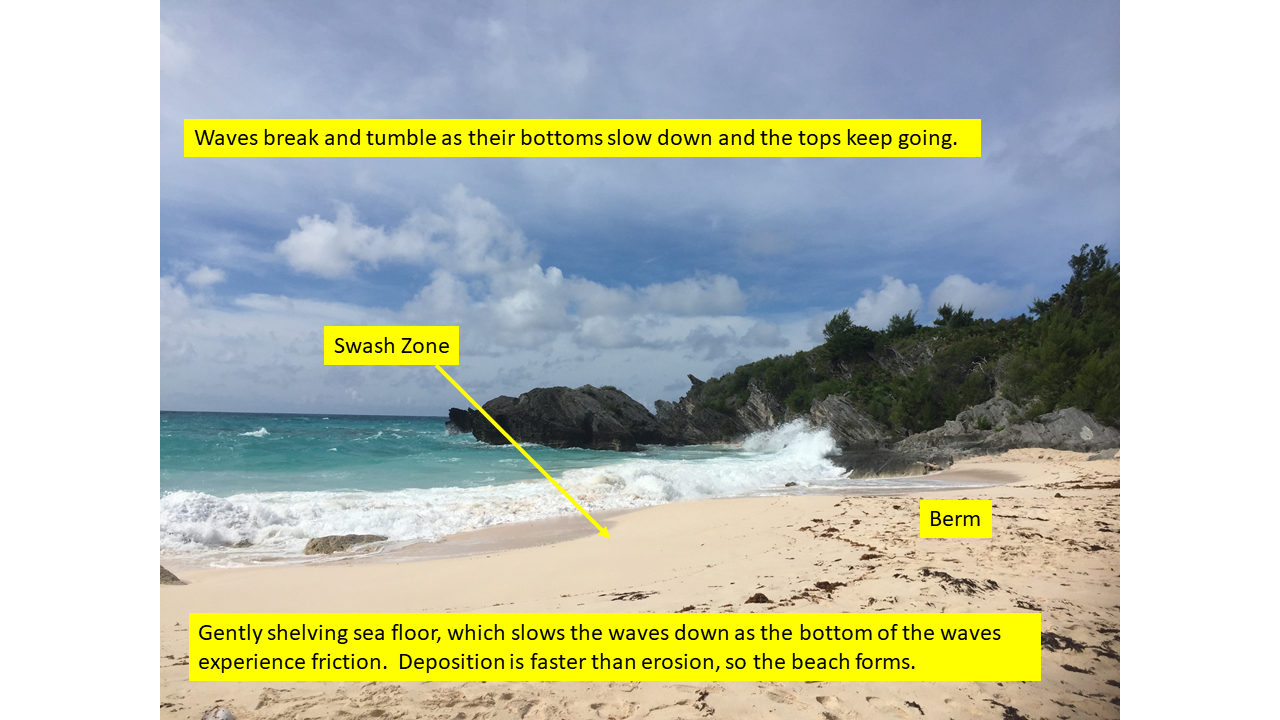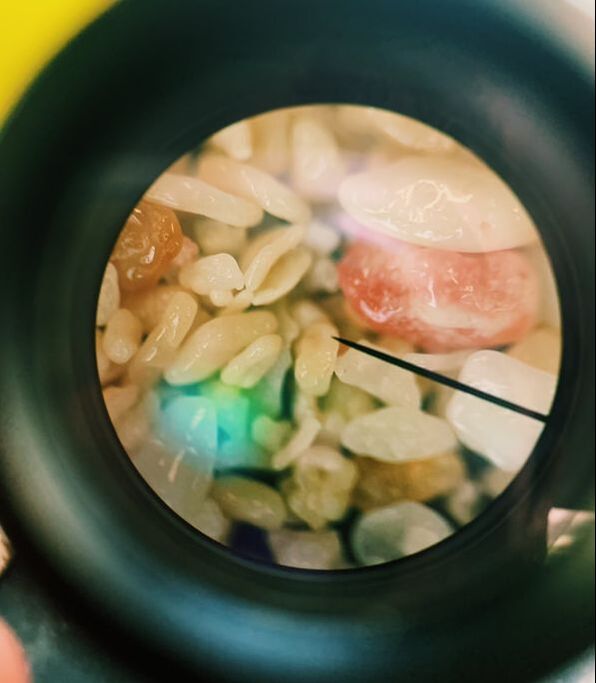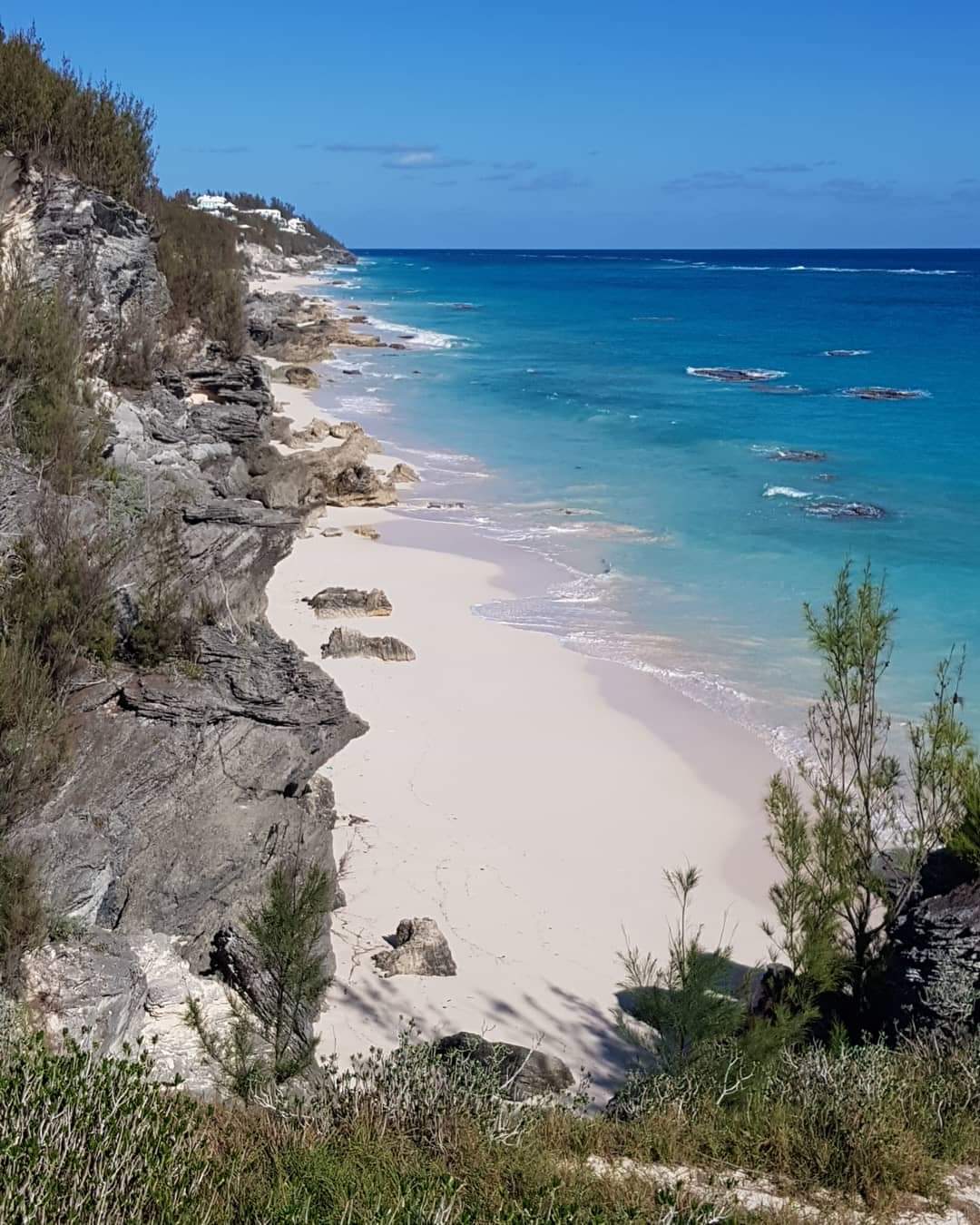|
Tsunamis >>
|
4.3 - Beaches
Objectives:
- To know what happens when a wave enters shallower water.
- To know what happens when waves meet a barrier such as an island or a reef and the implications for harbour design.
- To understand some of the effects of breaking waves upon a coastline.
Bermuda has some of the most beautiful beaches in the world. Beaches are formed when waves deposit more material than they erode away. During storms, our beaches can be badly eroded. Sometimes they can be completely scoured clean on sand to expose the rock underneath. Within a few weeks they come back, this demonstrates the deposition. The material comes from weathered rocks and shells that are battered by wave action.
Some key features to know are:
Some key features to know are:
- Swash Zone - this is the part of the beach that the waves directly affect. Named after the water squashing up and down it. The retreating wave is known as backwash.
- Berm - this is the upper level of the beach, above the squash zone.
- Dunes - these are the area far up the beach, where the wind blown sand settles. Often interlaced with plant life.
The shape of a beach rather depends on the angle of slope of the seabed. A shallow seabed slows the bottom of the wave down and so its top tumbles and squashes up the beach. The reduced speed of the wave means that its height increases as the same volume of water is arriving at the same rate. A slower speed reduces the wavelength and also leads to less erosion and more deposition. The slower speed is less able to carry the larger grains of sand, so that the beach sand is finer. The faster moving the water is, the more kinetic energy it has leading to it being able to carry larger grains of sand.
As the seabed get steeper, the water is not slowed down as much until it gets close to shore. This can lead to tall waves that suddenly trip over the rapidly slowing bottoms. The water hits the shore faster, with more kinetic energy. This increases the erosion and decreases the deposition. The ultimate case of this is when the waves crash against a steep cliff.
As the seabed get steeper, the water is not slowed down as much until it gets close to shore. This can lead to tall waves that suddenly trip over the rapidly slowing bottoms. The water hits the shore faster, with more kinetic energy. This increases the erosion and decreases the deposition. The ultimate case of this is when the waves crash against a steep cliff.
|
The pink sand that forms Bermuda's beach comes from the remains of the shells of red foraminifera organisms that live on the reefs. When they die, the waves break up the shells and wash them ashore. After a field trip to Warwick Long Bay, one of the students took this amazing photo through a microscope using her cell phone.
|
Before: One of the South Shore beaches shortly after the onslaught of hurricane Teddy, where all of the sand has been scoured away. The rate of erosion was far higher due to the storm waves than the rate of deposition (17 Oct 2020).
After: Same beach on 17 Jan 2021. The sand has mostly returned as the rate of deposition was greater than that of erosion due to the lower kinetic energy of the waves.
After: Same beach on 17 Jan 2021. The sand has mostly returned as the rate of deposition was greater than that of erosion due to the lower kinetic energy of the waves.
|
|
OC 4.3 - Beaches
Revision video made during the COVID lockdown. Poor sound quality though. |
ACTIVITIES
Explore Bermuda's beaches. Compare the sand on them. Which beaches have the finest sand? Which have the coarser sand? How does this relate to the slope of the beach? If a beach is curved, try to find the offshore gap that causes it.
Explore Bermuda's beaches. Compare the sand on them. Which beaches have the finest sand? Which have the coarser sand? How does this relate to the slope of the beach? If a beach is curved, try to find the offshore gap that causes it.
| |||||||
Tsunamis >>


